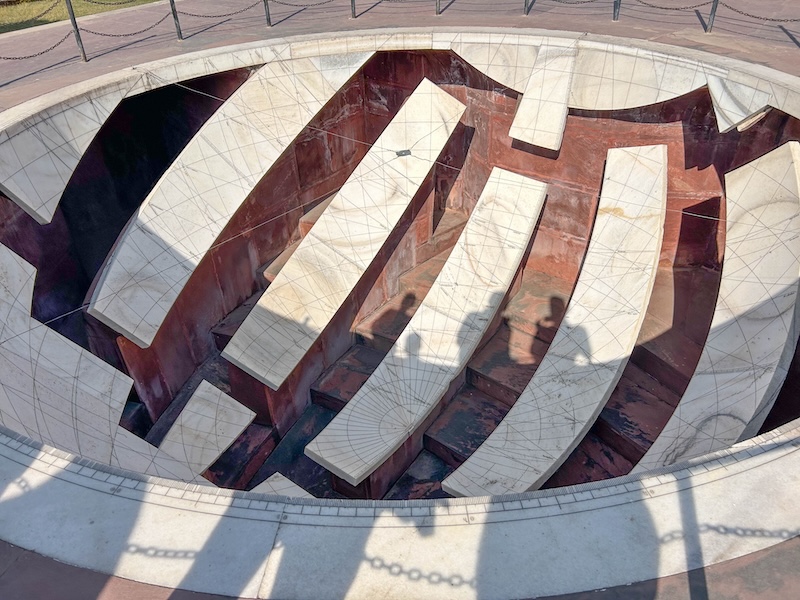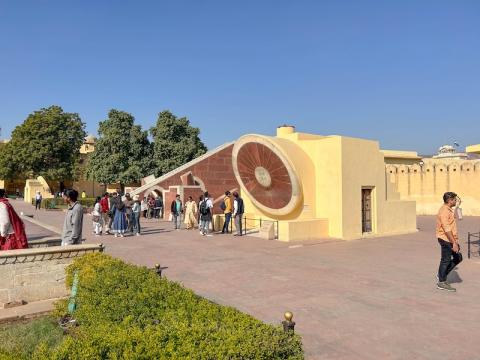The Jantar Mantar, Jaipur is a collection of 19 astronomical instruments built by the Rajput king Sawai Jai Singh, the founder of Jaipur, Rajasthan.
The monument was completed in 1734. It features the world's largest stone sundial, and is a UNESCO World Heritage Site. It is near City Palace and Hawa Mahal. The instruments allow the observation of astronomical positions with the naked eye. The observatory is an example of the Ptolemaic positional astronomy which was shared by many civilizations.
I first visited this observatory back in December, 2023 during our about 3 week trip to India. We were taken here by a tour guide and spent some good two hours here.

The monument features instruments operating in each of the three main classical celestial coordinate systems: the horizon-zenith local system, the equatorial system, and the ecliptic system The Kanmala Yantraprakara is one that works in two systems and allows transformation of the coordinates directly from one system to the other. It has the biggest sundial in the world.

The monument was damaged in the 19th century. Early restoration work was undertaken under the supervision of Major Arthur Garrett, a keen amateur astronomer, during his appointment as Assistant State Engineer for the Jaipur District.

The name jantar is derived from yantra a Sanskrit word, meaning "instrument, machine", and mantar from mantrana also a Sanskrit word "consult, calculate" Therefore, Jantar Mantar literally means 'calculating instrument'

The observatory consists of nineteen instruments for measuring time, predicting eclipses, tracking location of major stars as the Earth orbits around the Sun, ascertaining the declinations of planets, and determining the celestial altitudes and related ephemerides.

Built from local stone and marble, each instrument carries an astronomical scale, generally marked on the marble inner lining. Bronze tablets, bricks and mortar were also employed in building the instruments in the monument spread over about 18,700 square metres. It was in continuous use until about 1800, then fell in disuse and disrepair. Restored again several times during the British colonial rule, particularly in 1902, the Jantar Mantar was declared a national monument in 1948. It was restored in 2006. The restoration process in early 20th century replaced some of the original materials of construction with different materials.
